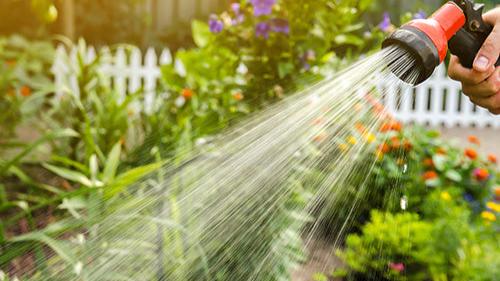Guide Chapters
-
How to Grow
-
Sowing
-
Plant Care
Your cart is empty
Continue shopping

Onions are an easy vegetable to grow and one of the most versatile vegetables you can find. Many people grow onions and shallots from sets, which are immature bulbs. Although, growing from seed is a good and straightforward starting point. If you’d like to know more about the best way to grow onions, you can do so with our blog to learn the different benefits of each. If you would like to grow onions from sets, you can also read our useful guide on how to grow onion and shallot sets. But, if you’re ready to get started on growing onion seeds and shallot seeds, our all-encompassing guide below has step-by-step instructions on how to do so.

When you sow your onion or shallot seeds depends on how you intend to grow them. You can sow indoors generally between January to February, which is best for the largest bulbs. Although traditionally, Boxing Day is known to be the first day on which many sow their seeds.
If sowing your onion or shallot seeds indoors, sow thinly 0.5cm/quarter-inch deep, in trays of seed compost. Ensure you keep them at a temperature of approximately 15°C.
If sowing your seeds outdoors, you can do so between March to April. Sow thinly 1.5cm/half-inch deep. Allow 30cm/12in between rows and when large enough, thin out to 20cm/8in apart. You should avoid sowing outdoors until the soil reaches 10°C.

Onions and shallots form a bulb when the number of daylight hours and the temperature hit the right combination, which activates their clock. Until that point, they use daylight to produce a good deal of top growth before forming bulbs. The more top growth, the bigger the bulb will be.
When the day reaches the right number of hours for that onion or shallot variety specifically, it will stop forming top growth, and form a bulb instead. The size of the bulb that eventually forms depends on the size of the "stalks", and the number of them.
There will be one ring in the onion or shallot for every stalk that is formed, and the larger the stalk, the larger each ring will be. However, bulb formation will pause when the weather is very hot, very cold or dry.
When first sown, you should water your newly planted onion or shallot seeds thoroughly, as this settles the soil around the bulbs and roots. You should water your seeds at regular intervals whenever the soil is dry, but don’t water them otherwise.
Stop watering, and feeding, once the onions have swollen and remove any mulch or soil with your hands, to expose the bulb to the sun
You should occasionally feed your onion and shallot plants with a suitable fertiliser, such as our onion, shallot and garlic fertiliser. A light feed of sulphate of potash in June or July will help ripen the bulbs. You should feed an autumn-sown crop with a liquid fertiliser in March.
Mulching the soil will help conserve soil moisture in addition to suppressing weeds. There are various ways this can be done, including using a thick layer of grass clippings, shredded leaves or clean straw.
The area where you grow your onions or shallots should be weeded frequently, as onions don’t grow as well when surrounded by competing plants, leading to a smaller bulb size. You can weed by using Darlac tools such as a narrow hoe or onion hoe. Alternatively, you can also weed by hand. Whichever method you choose, you should be careful not to damage the developing bulbs.
You should break off any flower stems that appear, as this will impact the storage of the bulbs and their growth.

We ran a survey and asked our valued customers to submit their top tips on how to sow and grow onions and shallots successfully. Some have been featured in our catalogues, but we thought we would publish these online to allow other growers to benefit.
We must add that we haven't tried all of the hints and tips below, but it may offer some insights into how other growers approach sowing and growing their onions!
At D.T. Brown Seeds, you can grow your own onions or shallots from seed by shopping our range of quality onion seeds. Additionally, you can find our onion, garlic and shallot sets and onion plants for further ways of growing. If you’re looking for more gardening advice, you can find plenty more from our experts on our gardening blog, with growing guides for many kinds of vegetables and fruits. If you’d like to find out more about our range of vegetable garden seeds and plants, fruit seeds, and fruit plants, don’t hesitate to get in touch and we’ll gladly answer any questions you may have.

Plant Expert
When Pim joined D.T. Brown, it was originally as a seed buyer, but now as our planting & sowing expert, he’s responsible for all horticultural and technical content, sharing his expertise in this catalogue, and through the growing advice and tips on our seed packets.
Leave a comment
All comments are moderated before being published.
This site is protected by hCaptcha and the hCaptcha Privacy Policy and Terms of Service apply.